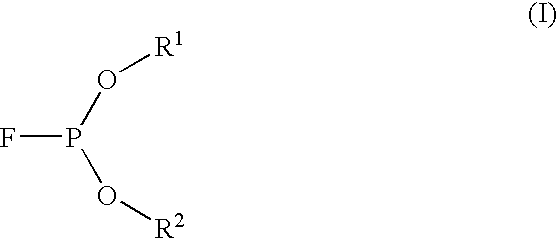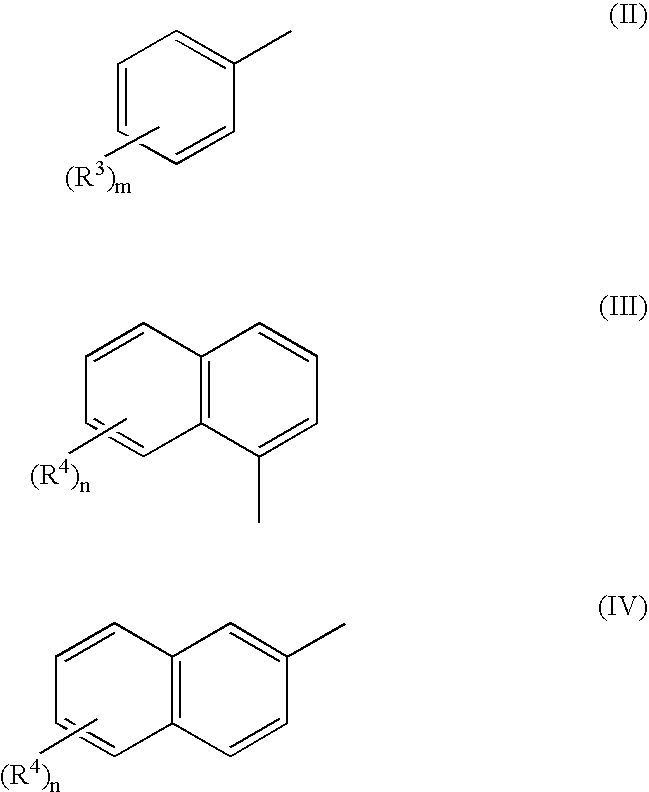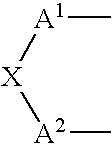Stabilization of fluorophosphite-containing catalysts
a technology of fluorophosphite and catalyst, which is applied in the direction of organic compound/hydride/coordination complex catalyst, physical/chemical process catalyst, ruthenium organic compound, etc., can solve the problems of reducing the activity of ligands disclosed by pruett and smith, and reducing the formation of h
- Summary
- Abstract
- Description
- Claims
- Application Information
AI Technical Summary
Benefits of technology
Problems solved by technology
Method used
Image
Examples
example 1-7
[0048]The experimental procedure of Example 1 was repeated except that another Group VIII was added to the catalyst mixture. The results of these experiments are tabulated in the Table below which specified the Group VIII metal compound and the amount thereof used in each of Examples 1-7 and wherein Acac is acetylacetonate and Hydrogen Fluoride Content refers to the milligram HF per 100 grams of butyraldehydes produced. The results clearly show that the presence of the additional Group VIII metal compound to the catalyst reduces the amount of hydrogen fluoride in the product aldehyde.
[0049]
TABLEGroup VIIIExampleMetalAmountHydrogen FluorideNumberCompoundAddedContent2Ru(Acac)30.03 g0.0463Ru(Acac)30.15 g0.0474Co(Acac)30.02 g0.0335Pd(acetate)20.02 g0.0566Co(Acac)30.10 g0.0357Pt(Acac)30.03 g0.0188Ru3(CO)120.05 g0.045
PUM
| Property | Measurement | Unit |
|---|---|---|
| concentration | aaaaa | aaaaa |
| pressure | aaaaa | aaaaa |
| temperature | aaaaa | aaaaa |
Abstract
Description
Claims
Application Information
 Login to View More
Login to View More - R&D
- Intellectual Property
- Life Sciences
- Materials
- Tech Scout
- Unparalleled Data Quality
- Higher Quality Content
- 60% Fewer Hallucinations
Browse by: Latest US Patents, China's latest patents, Technical Efficacy Thesaurus, Application Domain, Technology Topic, Popular Technical Reports.
© 2025 PatSnap. All rights reserved.Legal|Privacy policy|Modern Slavery Act Transparency Statement|Sitemap|About US| Contact US: help@patsnap.com



